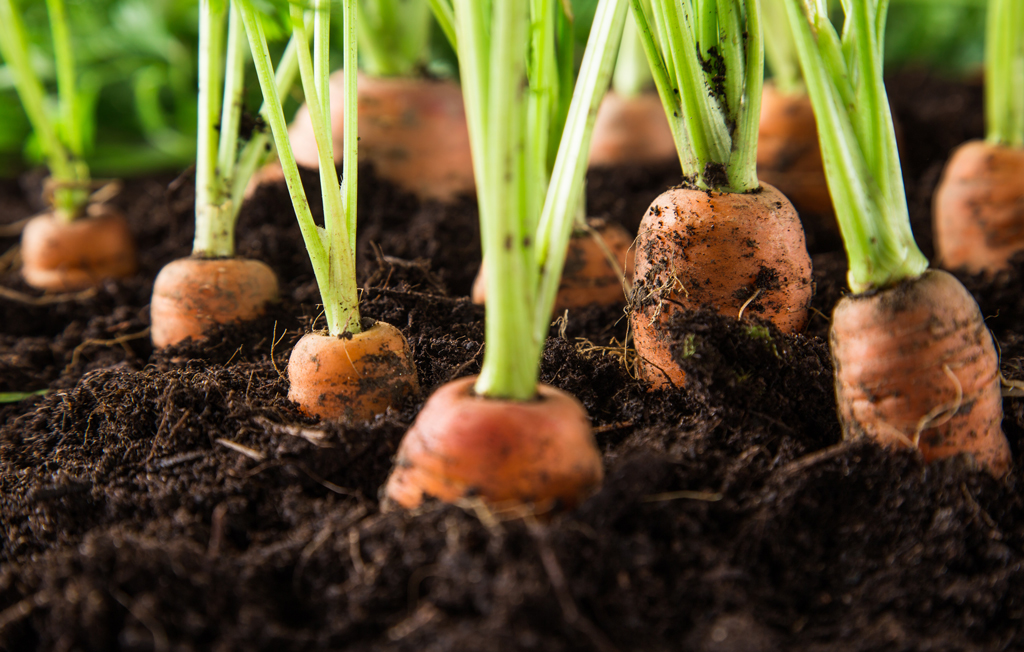IN THE GARDEN: Frost tolerant vs. frost susceptible

Carrots are a frost-tolerant vegetable. The cold can even make them sweeter. Adobe Stock image
For fall gardening, it is important to know which vegetables are frost tolerant and which are frost susceptible.
First off, what’s the difference between frost tolerant and frost susceptible? A frost-susceptible vegetable/fruit/crop will be killed or injured by temperatures below 32 degrees Fahrenheit, according to the Texas A&M AgriLife Extension Service. A frost-tolerant vegetable/fruit/crop can withstand temperatures below 32 degrees. (NOTE: Most frost-tolerant plants will likely survive light to moderate frosts but could be damaged or killed by exposure to frost and temperatures below 25 degrees.)
For ease of gardening, we advise grouping your long-term frost-tolerant vegetables together and your short-term frost-susceptible plants together. That way, when your short-term frost-susceptible vegetables succumb to the frost, they can be easily removed.
Frost-tolerant vegetables include beet, broccoli, Brussels sprouts, cabbage, carrot, cauliflower, chard, collard, garlic, kale, lettuce, mustard, onion, parsley, spinach, and turnip.
Frost-susceptible vegetables include bean, cantaloupe, corn, cucumber, eggplant, okra, pea, peppers, Irish potato, sweet potato, squash, tomato, and watermelon.
Carrots are frost-tolerant and can withstand light frost and even snow, but for prolonged or hard freezes, protection like a cold frame, hoop house, or a thick layer of mulch can help keep the ground from freezing. Cold temperatures convert starches in the carrot roots to sugars, making them sweeter, so frost can actually improve their flavor.
Carrot varieties that do best in Texas include Danvers 126, Danvers Half Long, Imperator 58, Nantes, Nantes Half Long, Red Core Chantenay, Royal Chantenay, Scarlet Nantes, and Sugar Snax. We also suggest planting carrots, onions, and turnips in a raised garden bed or a large container such as a whiskey barrel as Master Gardener Willard Horn does.
Lettuce, a frost-tolerant crop, can be planted in late September or October. Four main types of lettuce are: crisp-head (iceberg), loose leaf, butterhead, and romaine (cos lettuce). FYI: Loose-leaf lettuce is generally the easiest to grow, most tolerant of Central Texas weather conditions, and nutritious.
For your companion in the garden, add mint. Mint repels the less desirable visitors such as aphids, cabbage moths, flea beetles, fleas, and ants. (NOTE: There are over 500 species of mint, including spearmint, pineapple, orange, chocolate lavender, calamint, grapefruit, basil, ginger, pennyroyal, and licorice—they will each get the job done.)
Fall is a wonderful time to plant herbs! If you plant your herbs in pots, you can bring them in when winter comes. Herbs that do well for fall gardening include bay laurel, lemongrass, pineapple sage, lemon verbena, rosemary, parsley, dill, garlic, and basil.
Till next time. Keep your souls and soles in your garden! Remember the True Master Gardener: Jesus said, “I am the vine; my Father is the Gardener.” John 15:1
“In the Garden” is written by father-daughter gardening team Bill and Martelle Luedecke. If you have any gardening questions, contact Martelle at 512-769-3179 or luedeckephotography@gmail.com or Bill at bill@texasland.net.


